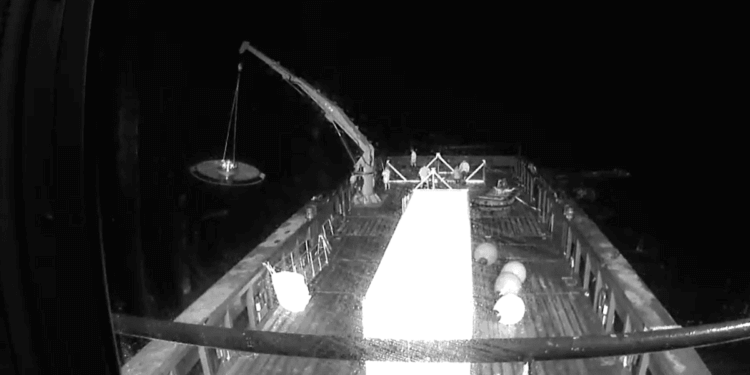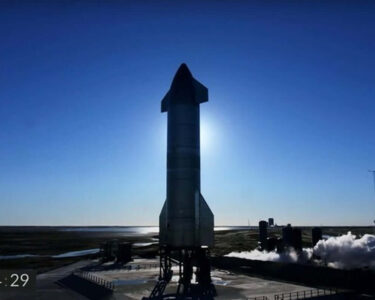After launching an inflatable heat shield experiment to space on Thursday, NASA has now recovered the device after its splashdown in the Pacific Ocean. The space agency is seeking to learn whether this kind of heat shield can protect precious payloads from the high temperatures of atmospheric reentry.
NASA’s Low-Earth Orbit Flight Test of an Inflatable Decelerator (LOFTID) took off onboard an Atlas 5 rocket at 4:49 a.m. ET on Thursday from the Vandenberg Space Force Base in California. The flying saucer may not look like much, but this $93 million device could play a crucial role in sending future missions to Mars, Venus, and Titan.
LOFTID separated from the rocket about 75 minutes after liftoff. The rocket’s upper stage performed two burns to place the heat shield on a reentry trajectory, and LOFTID inflated as it began its journey back down to Earth. The fully inflated device was about 78 miles (125 kilometers) above the surface when it began its reentry through Earth’s atmosphere, NASA reports in blog updates today.
LOFTID is made out of ceramic fiber that is woven together to create a fabric. This fabric is designed to endure temperatures close to 3,000 degrees Fahrenheit as it plummets through the atmosphere at 18,000 miles per hour. The heat shield is meant to slow down heavier payloads as they descend to Earth, or to the surfaces of other planets like Mars and Venus, and land them safely with the help of a parachute.
For the Star Wars fan with everything.
These lightsabers are powered by Neopixels, LED strips that run inside the blade shape that allows for adjustable colors, interactive sounds, and changing animation effects when dueling.
The heat shield’s parachute deployed about two hours after liftoff, and LOFTID splashed down in the Pacific Ocean near the coast of Hawaii, where a recovery boat was sent to find it. The crew on board the Kahana-II vessel fished LOFTID out of the ocean and placed it on deck, according to NASA.
LOFTID provided limited data during the demonstration, which is why it was crucial to retrieve the shield so that NASA engineers can take a look at the data collected throughout its descent. The results of the demonstration will be available within a few days, NASA says.
It’s not yet clear whether LOFTID performed as expected during its reentry. The heat shield splashed down in the ocean “a few minutes later than originally thought based on the expected mission timeline,” NASA wrote in a short update. LOFTID should have slowed down from a maximum speed of Mach 29 to Mach 0.7 during its reentry, but the onboard data still needs to confirm its speed.
If the experiment is successful, it could one day assist in crewed missions to Mars, as well as heavier payload missions to Venus or Saturn’s moon Titan.
“The LOFTID test represents a major step towards flight readiness of large surface area heat shields,” Sadaf Sobhani, an assistant professor of mechanical and aerospace engineering at Cornell University, said in an emailed statement. “This is important because future exploration missions, such as landing humans on Mars, will require heat shields much larger than what can fit within a rocket payload, therefore deployable technologies will enable such otherwise unattainable missions.”





